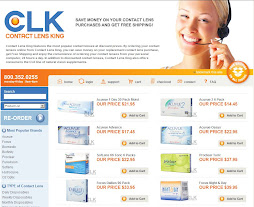Water is one of the most plentiful substances on Earth, and its relationship to man’s survival is vital. However, when it comes to contact lenses, water holds both risks and benefits depending on its source.
Water has always been thought of as a cleanser, and in most instances that is true, but not so in the case of contacts. Water should not be used to clean or store lenses because it contains bacteria and microorganisms that transfer first to the lenses and then to your eyes. The serious infections and eye damage that result can cause vision loss, and even blindness. It does not matter whether the water comes from a filtered tap or is bottled or distilled, those harmful organisms remain. Use nothing but approved contact solutions to clean and store your lenses.
If you are the type of person who enjoys water sports or leisure activities, care must be taken when wearing your contacts in lakes, pools, hot tubs, or the ocean. Water splashed in the eyes will leave your lenses vulnerable to the same type of pathogens found in tap water. It is recommended that you remove your contacts before going into the water, or protect them with swim goggles. If water does get in to your eyes while wearing your lenses, remove them immediately. Thoroughly rinse them in solution and store them overnight. Daily disposable lenses are very convenient in this regard as they can be removed and replaced with a fresh pair right away. This is handy in situations when you find yourself without contact solution, e.g. at a park, lake, or resort.
On the other hand, the water that forms our tears is essential for comfortable contact lens wear. Not only do tears keep the eye healthy by flushing out dust and debris, they also minimize the growth of naturally occurring microorganisms that can appear on the eye’s surface. Tears are also important in keeping the cornea supplied with oxygen while contacts are in place, and blinking allows the tears to be continually replenished.
In addition, a recent innovation in contact lens manufacture has allowed water to become a component in silicone hydrogels, a soft lens that can deliver more oxygen to the cornea because of the water content in the plastic that makes up the lens. As a result, these contacts have become some of the most popular types on the market.
So, water has a two-fold relationship with contact lenses—one harmful, the other beneficial. Being mindful of the differences will keep your experience with lens wear a pleasant, comfortable, and healthy one.
Friday, June 25, 2010
Water and Contact Lenses
Subscribe to:
Post Comments (Atom)





No comments:
Post a Comment